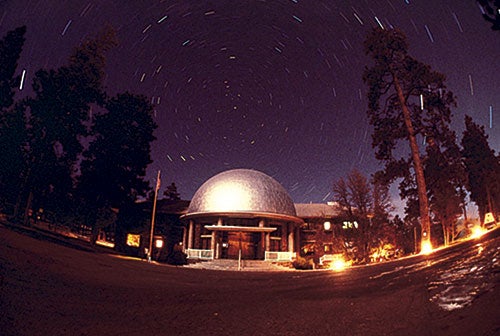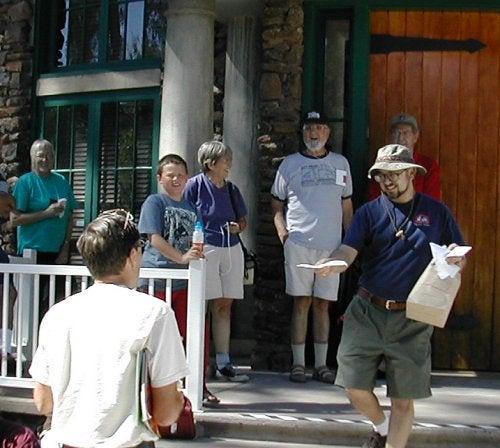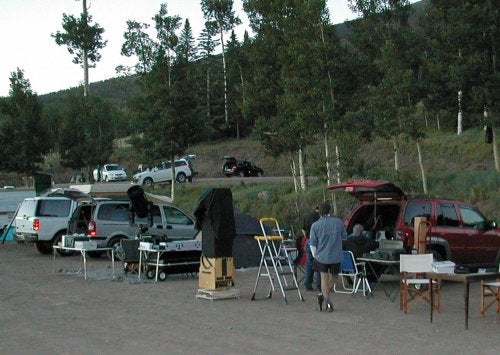More than one hundred and thirty people enjoyed the sunny, blue skies — and clear, dark nights — in Flagstaff, Arizona, during the second annual Lowell Star Party, Thursday, June 17, through Sunday, June 20. Amateur astronomers from across the United States gathered at the Lowell Observatory campus atop Mars Hill to observe, attend lectures, shop at the marketplace, and tour the astronomical exhibits and historic grounds.
At the marketplace, on the plaza in front of the observatory’s Slipher Building and Rotunda Library, Inifini-Tees, Stellar Vision, Nite I’s, and Scopebuggy offered items for sale. Astronomy handed out copies of the magazine, posters, and other information such as seasonal observing charts. On Saturday afternoon, door prizes totaling roughly $2,500 donated by these and other companies were awarded, including a Meade ETX-90 telescope and two Celestron NexStar 4 telescopes.
For many in attendance, the highlight of the star party may have been observing through the century-old 24-inch Clark refractor. During the preceding week, star-party attendees were able to reserve private, 90-minute sessions with a Lowell staff member to observe through the historic scope. On Friday and Saturday nights, after the observatory closed to the public, the scope was opened to all star-party participants. One especially fitting celestial object on view was Pluto. (Clyde Tombaugh discovered the planet at Lowell Observatory in 1930 using a 13-inch scope, now called the Pluto Discovery telescope.)
While the high altitude and remote location of the Snowbowl provided a dark sky for observing, the beautifully landscaped Mars Hill campus, with its rich legacy of discovery, was a wonderful setting for this star party. The enthusiasm of both star-party attendees and Lowell Observatory staff members for their surroundings was unmistakable, helping make this party a wonderful blend of the past and future of astronomy.













